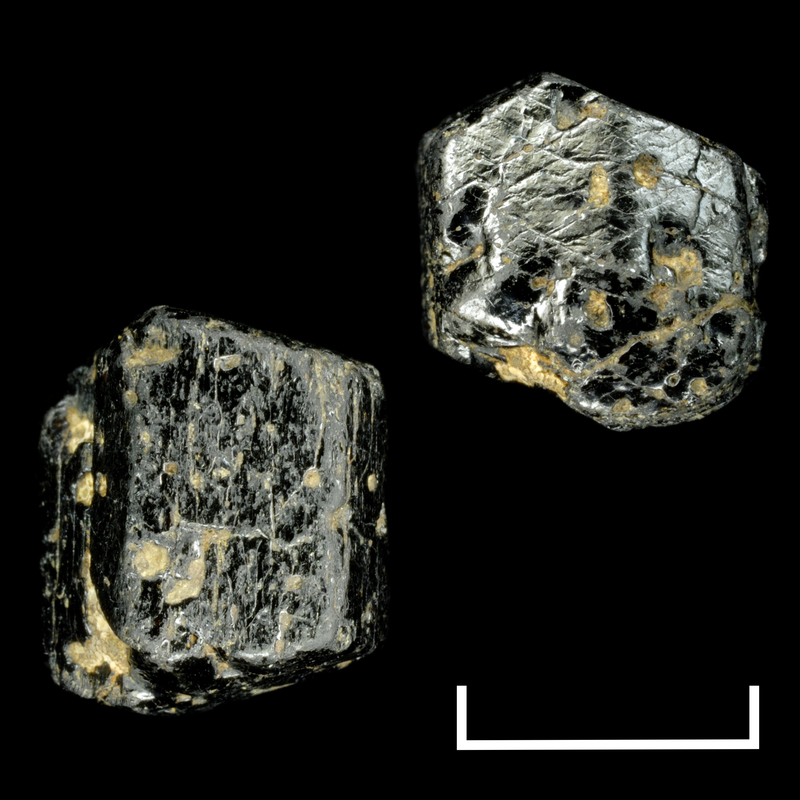- Home
- Rocks
- Type fossils
- Fossil Specimens
- Minerals
- Glossary
- Stratigraphic Chart
- Michel-Levy Chart
- Classification of igneous rocks
- University of Cambridge
- Department of Earth Sciences
- ESC Library
- Moodle
- Sedgwick Museum
- DoITPoMS
- Mindat.org
- Microfossils
- Bryozoans
- Webmineral
- Tree of Life
- CrystalMaker
- Virtual Microscope
Amphibole (hornblende)
Title
Amphibole (hornblende)
Description
Formula
(Na,K)0-1Ca2(Mg,Fe2+,Fe3+,Al)5Si6-7.5Al2-0.5O22(OH)2
Structure
Chain silicate
Crystal System
Crystal system: monoclinic (+) (-)
Physical Properties
Colour in hand specimen: black
Cleavage: two at ~56°
Hardness: 5-6
Optical Properties
Colour in plane polarised light: pale green, green, light yellow-brown to brown
Pleochroism: yes
Relief: moderate
Birefringence: ~0.02; 2nd order purple
Extinction: inclined
Twinning: simple, lamellar, common
Mineral Specimens
M210 Amphibole, hornblende
Bilen, Bohemia
Single, black prismatic crystal.
At the ends of the crystal two sets of cleavage planes are visible, intersecting at ~56°
M211 Amphibolite
Isle of Coll, Inner Hebrides
A metamorphic rock consisting almost entirely of crystals of the amphibole hornblende
Black
Brilliant lustre
Two sets of cleavage planes intersect at ~56°
Rock Specimens
Advanced Notes
The amphibole group encompasses a wide range of compositions. Even the hornblendes, which are a sub-group of the amphiboles, encompass a range of compositions (see mineral formula, above). The properties above refer to hornblende.
Mineral Name
amphibole
hornblende
hornblende
Citation
“Amphibole (hornblende),” 1A Collections, accessed April 9, 2024, https://wserv3.esc.cam.ac.uk/p1acollections/items/show/50.


